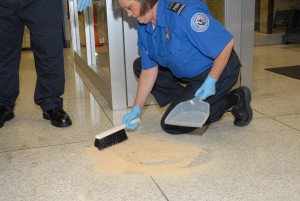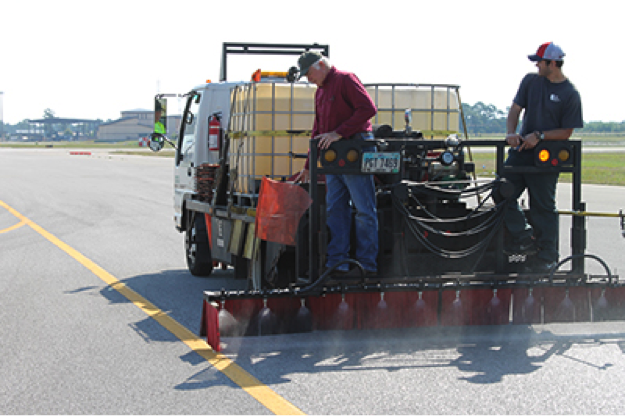Nature’s Broom Offers Sweeping Change to Absorbent Industry
March, 2008
 When Boyd Eifling was looking for an improvement to absorbent technology, he looked no further than his experience as a soybean farmer to find his secret ingredient. Most absorbents are made from clay, but Nature’s Broom uses soybean oil and a combination of biobased products to soak up liquid spills. Although the United Soybean Board (USB) and the soybean checkoff did not fund this particular technology, it continues to support new industrial uses for soybeans.
When Boyd Eifling was looking for an improvement to absorbent technology, he looked no further than his experience as a soybean farmer to find his secret ingredient. Most absorbents are made from clay, but Nature’s Broom uses soybean oil and a combination of biobased products to soak up liquid spills. Although the United Soybean Board (USB) and the soybean checkoff did not fund this particular technology, it continues to support new industrial uses for soybeans.
“Some absorbents currently on the market only absorb on the surface, take a large quantity, are slow to work and expose workers to danger from dust,” says Eifling of Nature’s Broom. “Nature’s Broom can absorb a wide range of liquids, including chemicals, hydrocarbons, oil, fuel and more.” So how does the product work? The granular absorbent is placed directly on spills and needs to be worked into desired area with a stiff bristled broom. The product uses soy to help encapsulate liquid into little balls that can be easily swept away. The process makes the product very cost effective when compared to similar petroleum products. The spill turns into a solid form, and it’s swept up and disposed. Eifling says that household spills can be disposed of in a landfill, but you should check with the local landfill on other materials.
The soy-based product allows you to clean the spill and have the work space back quickly. Slow-acting absorbents require workers and equipment to dodge piles of clay. If the clay is disturbed, it can scatter and lead to additional messes.
Millsaps Sorbents Laboratory tested Nature’s Broom and found that it outperformed most clay-based products and was also cheaper per application, according to Eifling.
The soy-based absorbent has also been tested by the military. The 1387th Quartermaster Company of the National Guard in Greenville, Miss., recently began using the product and found that it absorbed heavy oil spills more effectively than clay.
To learn more about Nature’s Broom, visit www.natures-broom.com. To learn more about new uses for soy products, visit www.soynewuses.org.
USB is made up of 68 farmer-directors who oversee the investments of the soybean checkoff.

